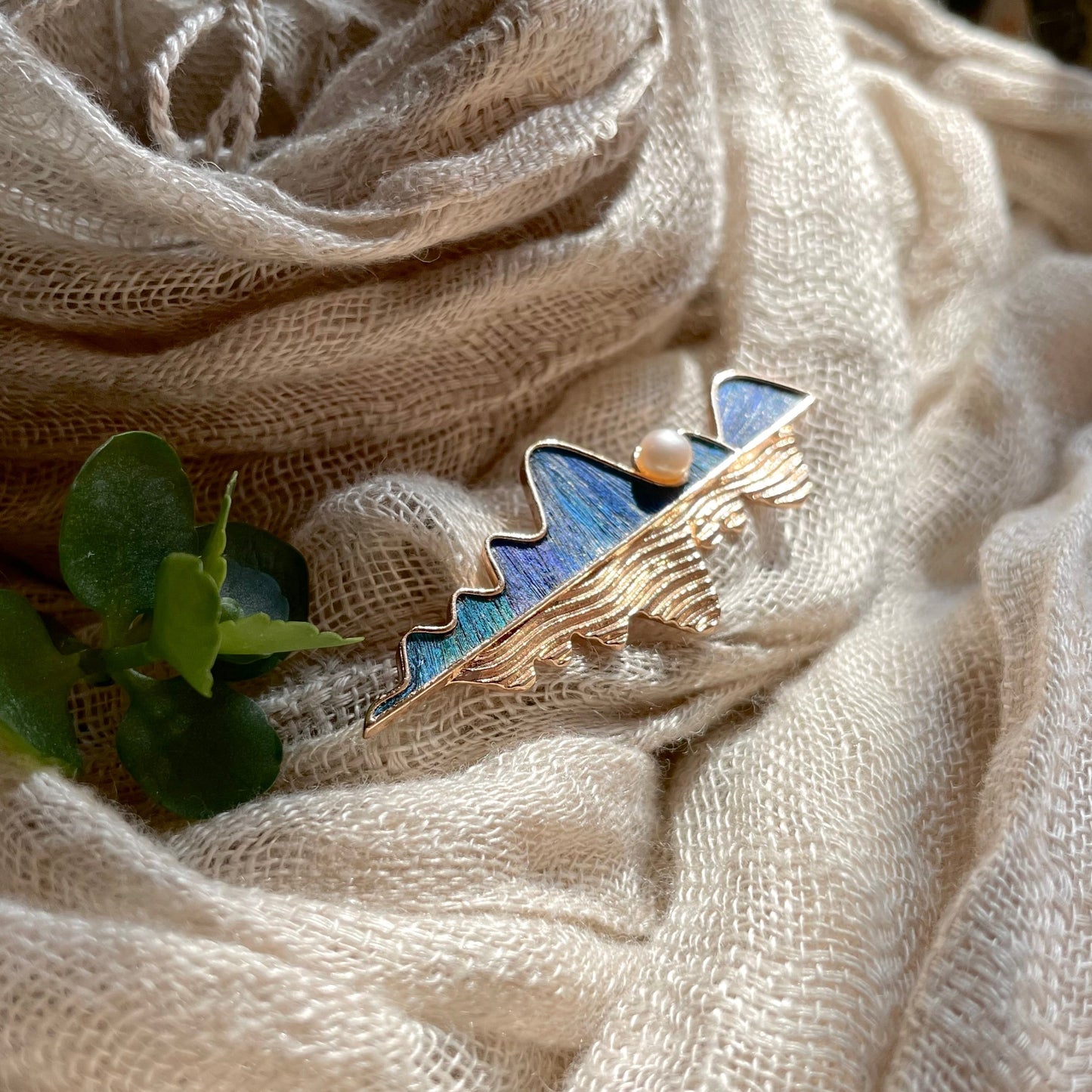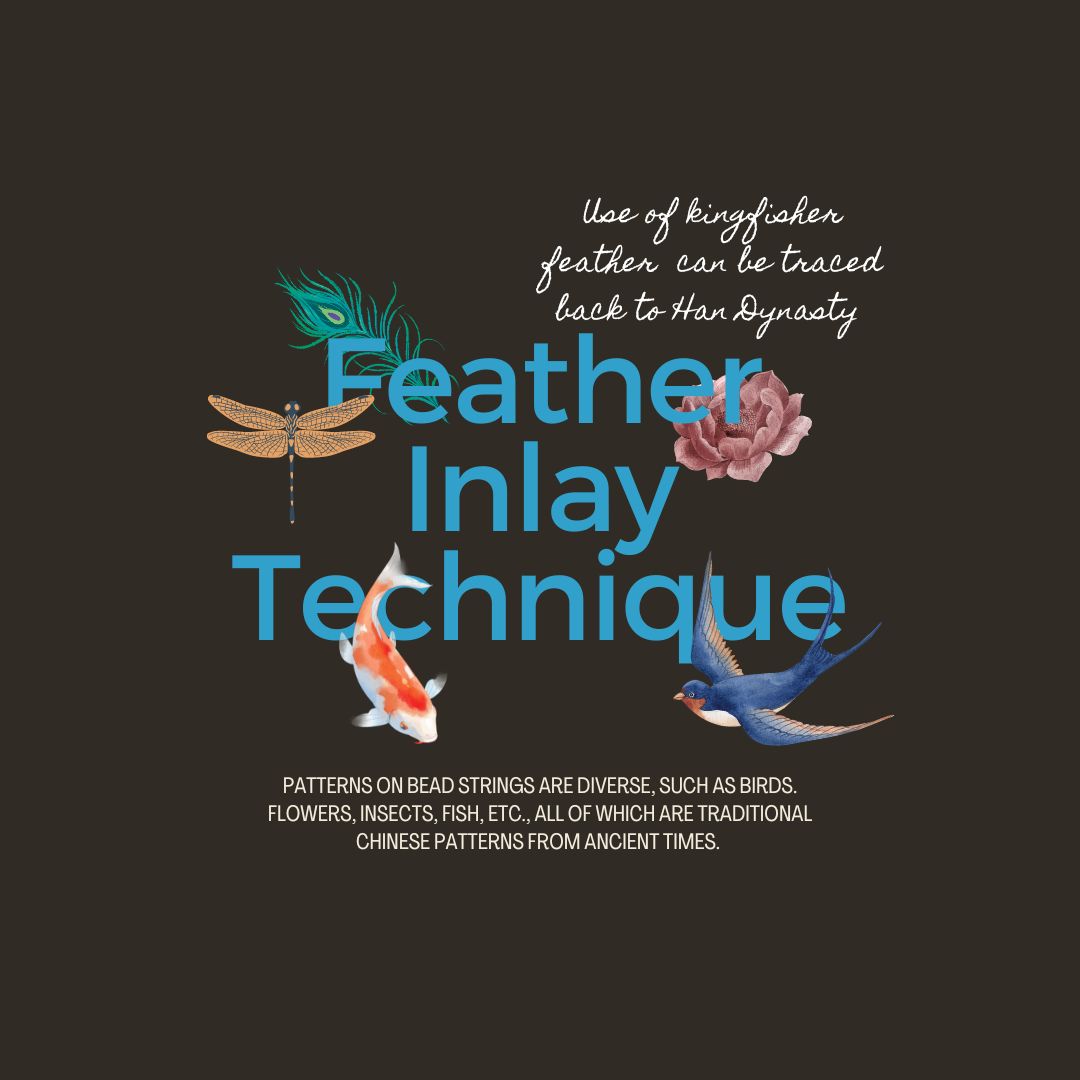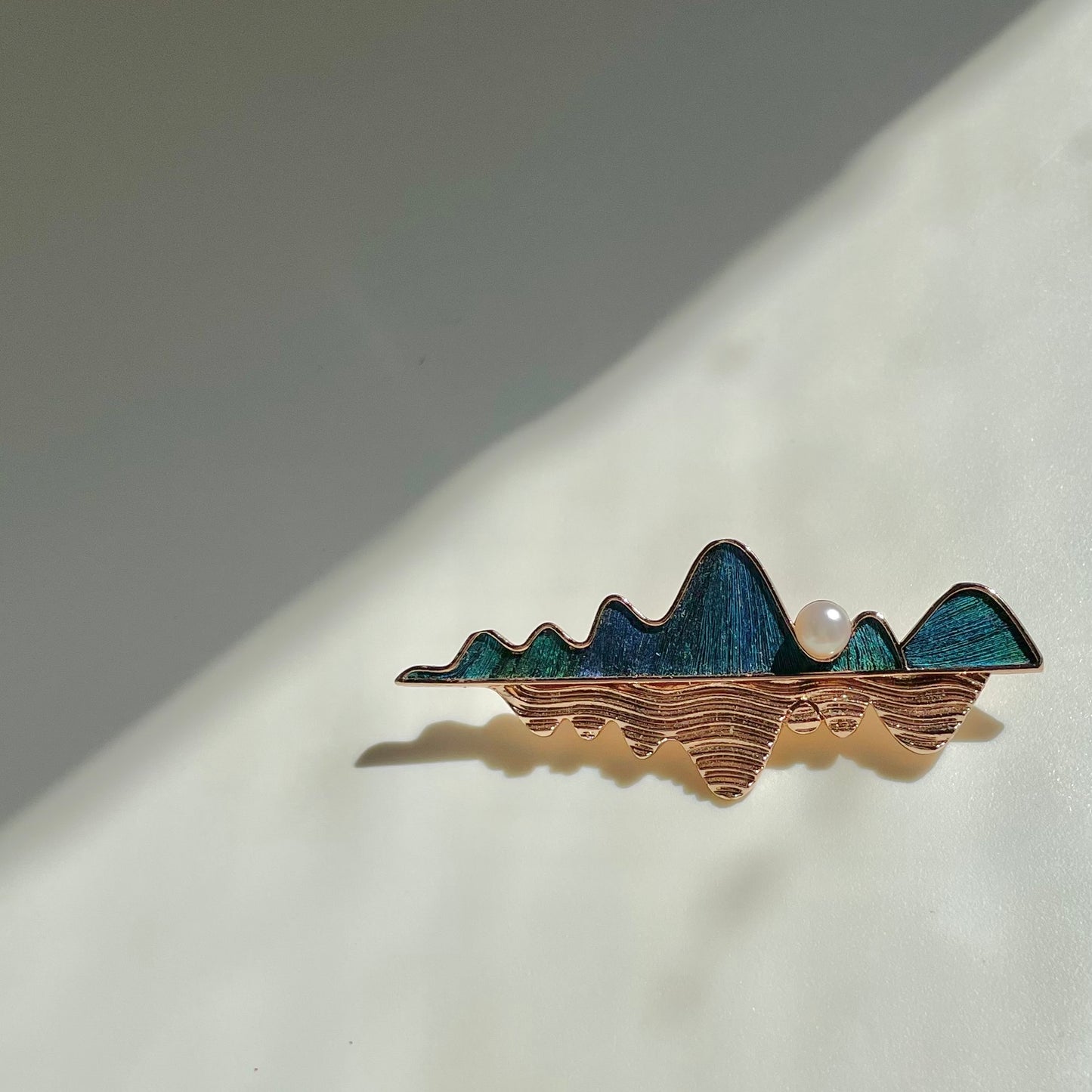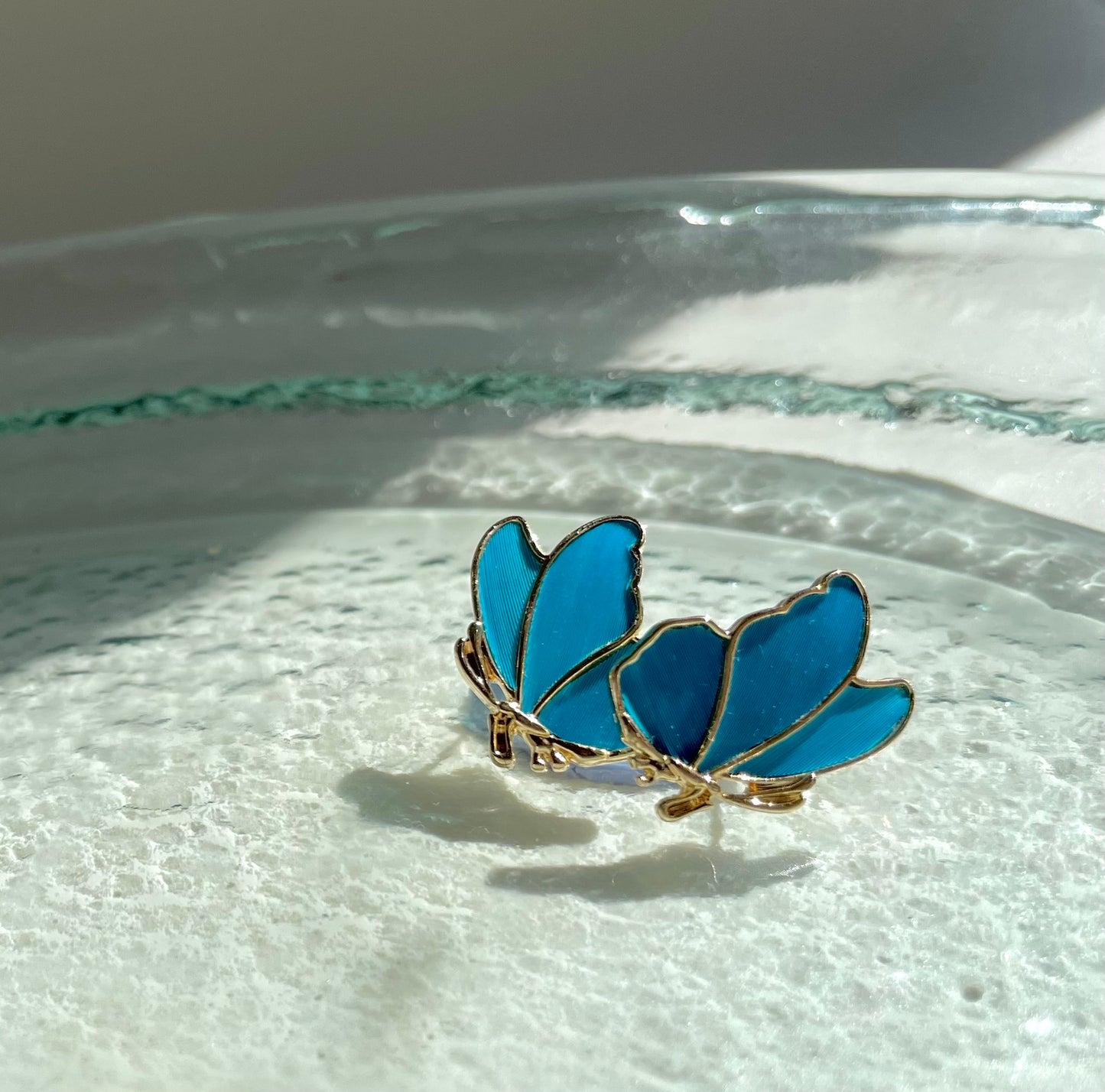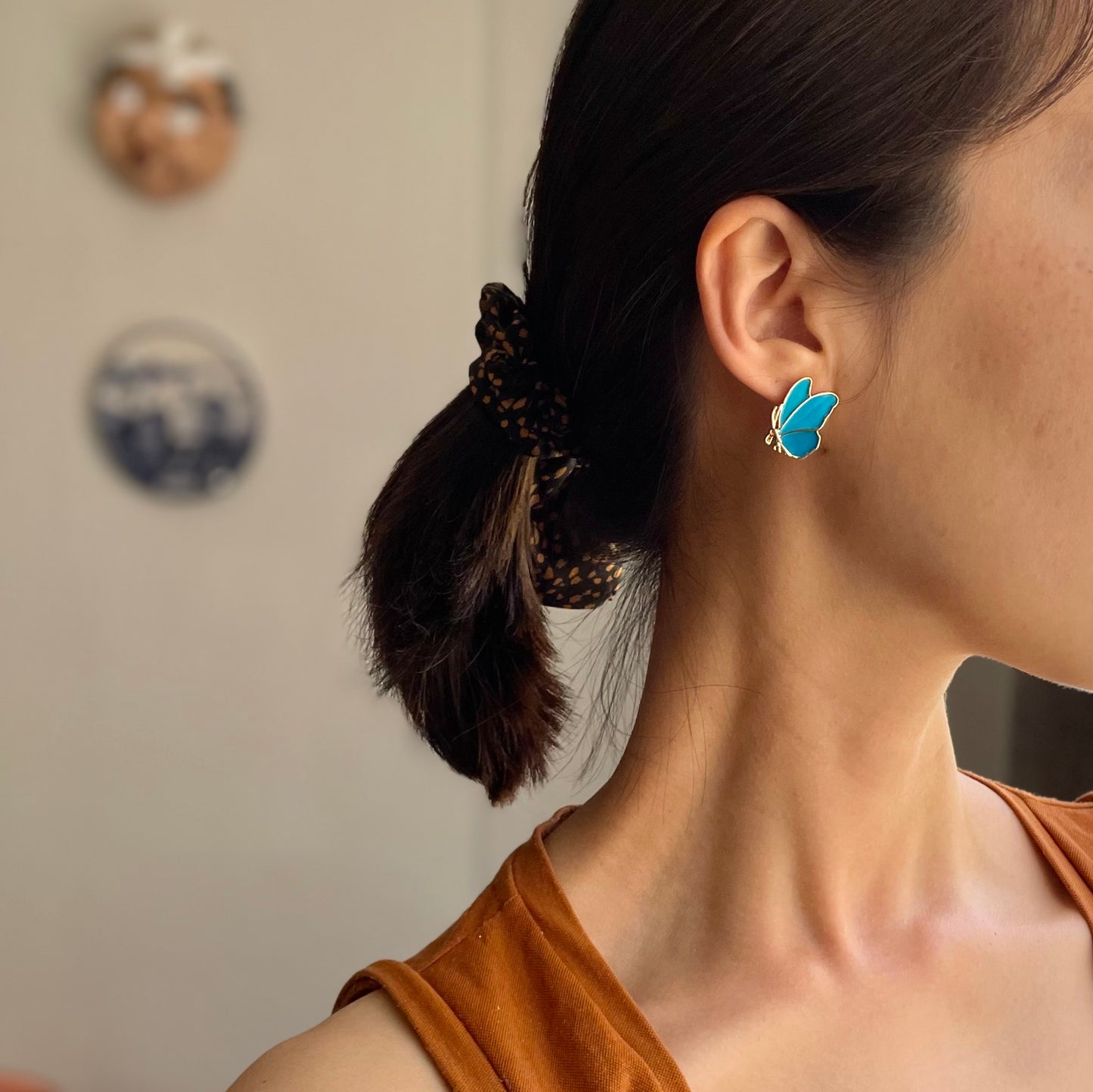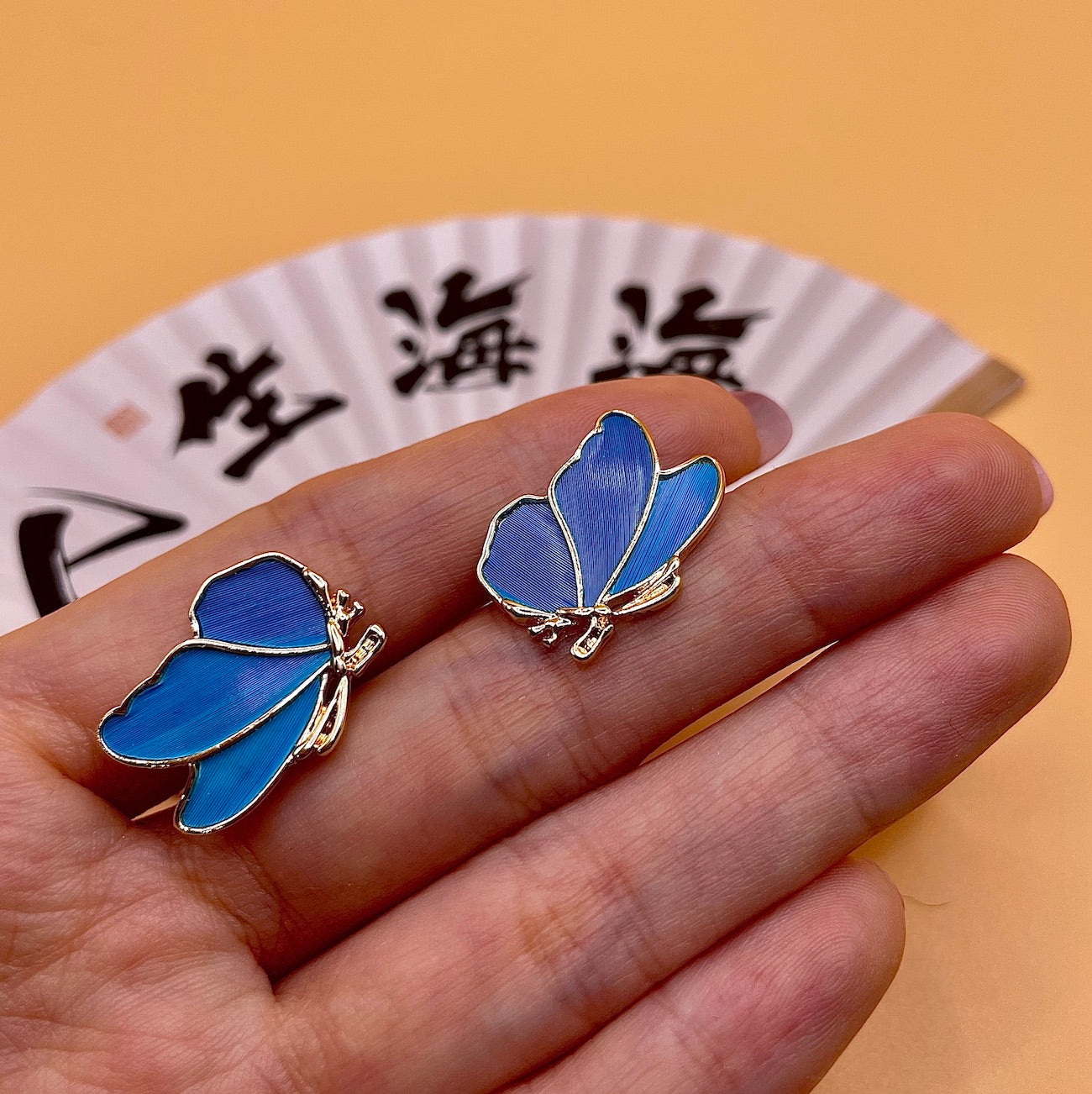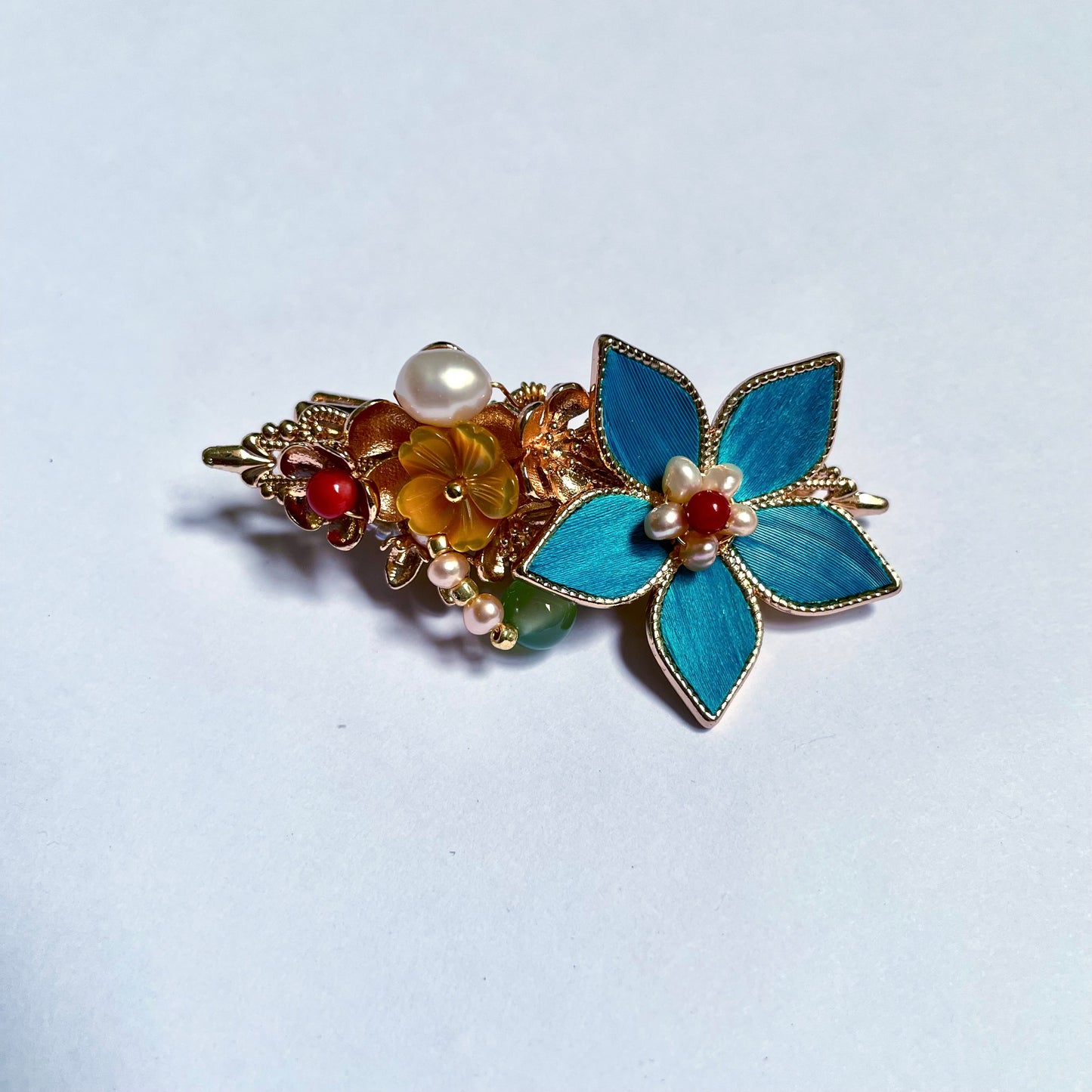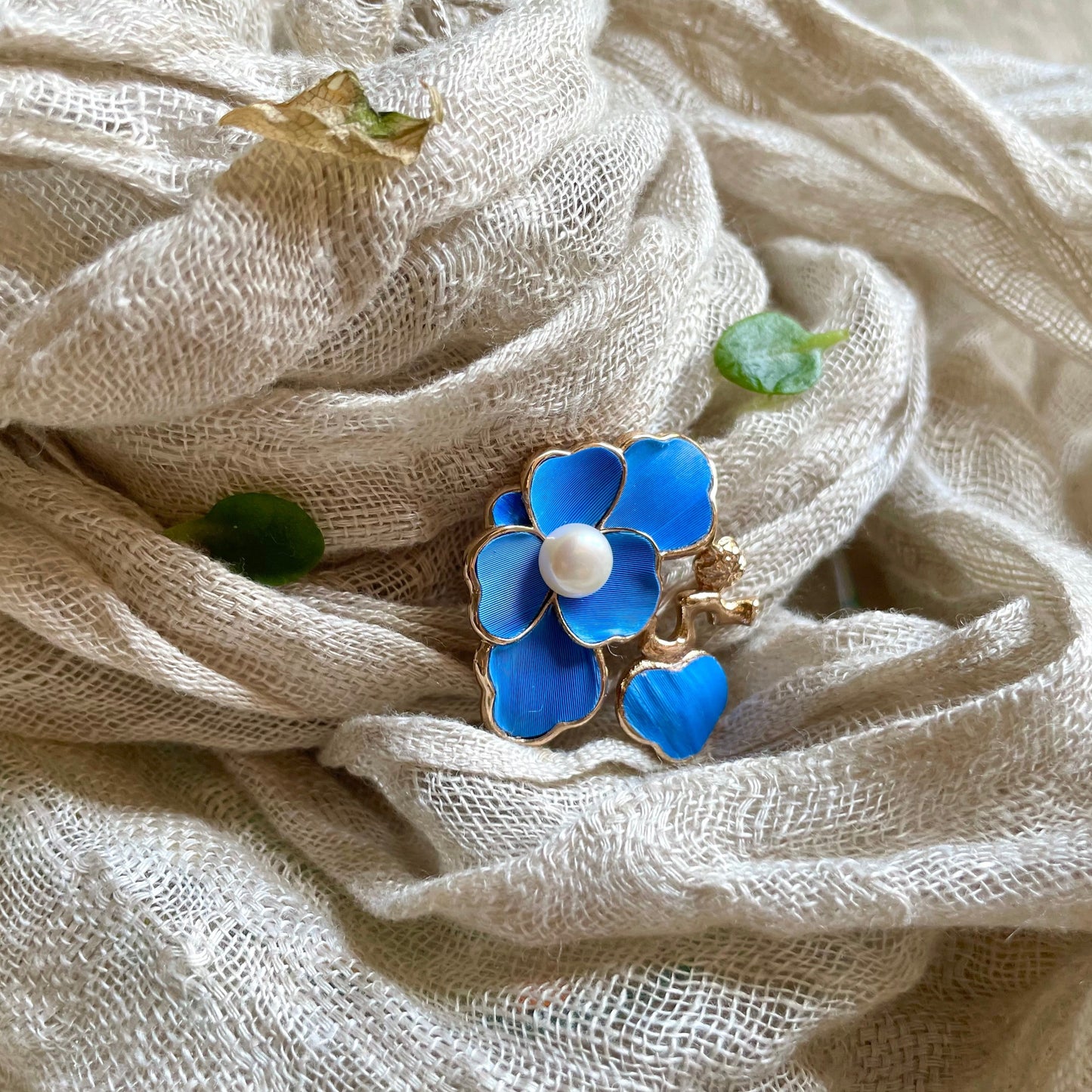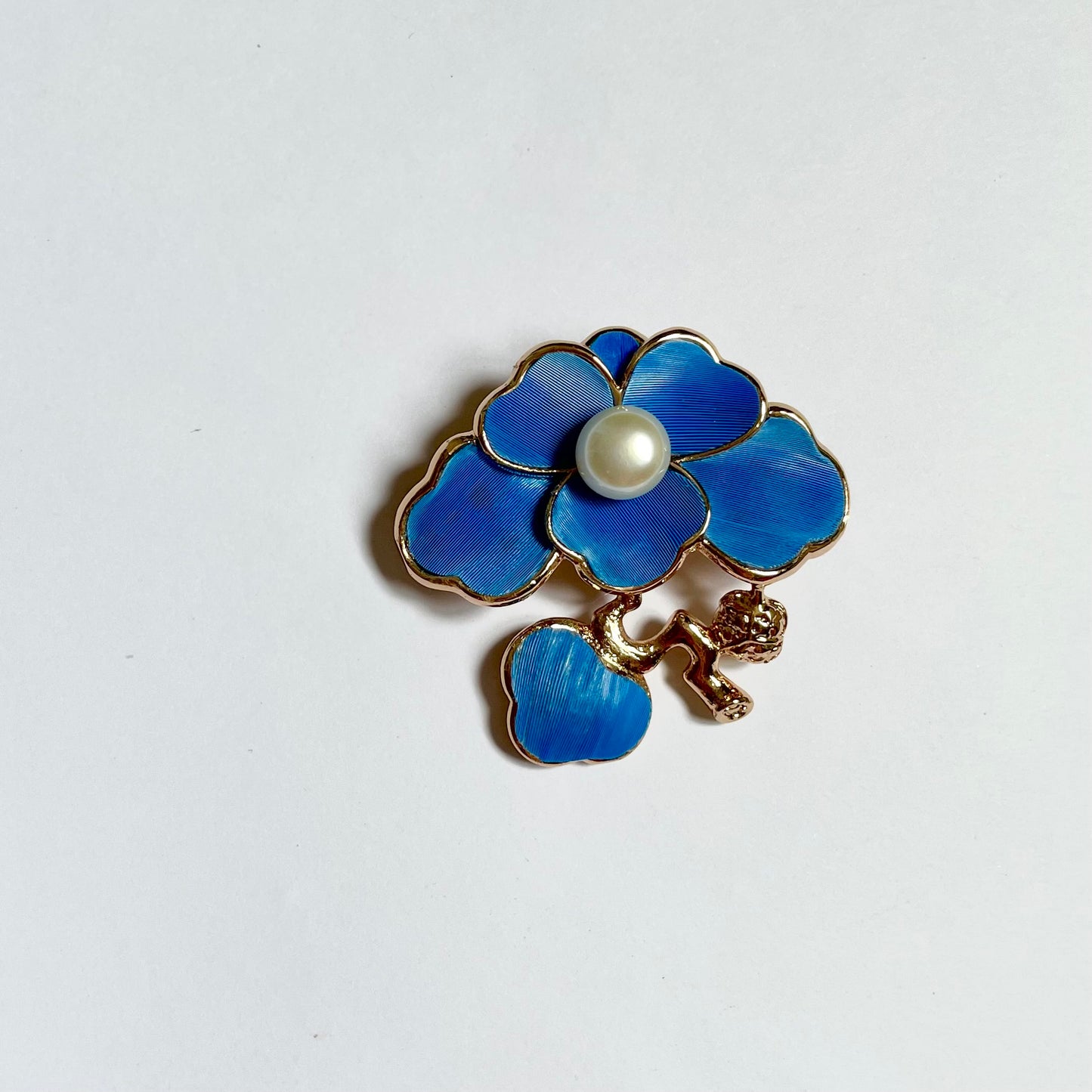But how exactly is it made?
The process of Tian Tsui requires a high level of skill and attention to detail, making it a valuable and respected craftsmanship in Chinese traditional jewelry making. It requires great precision and patience to arrange the delicate feathers in intricate patterns and to ensure the final product is both beautiful and durable.

It follows these principle steps:
1. Choose the feathers: The first step is to select the feathers to be used in the inlay. The feathers need to be cleaned, sorted, and trimmed to the desired length.
2. Prepare the metal: The metal piece, such as a gold or silver hairpin, is then carefully carved with the design that will be inlaid with feathers. The surface is then cleaned and polished.
3. Apply the glue: A special type of adhesive is applied to the surface of the metal where the feathers will be inlaid.
4. Inlay the feathers: The feathers are then carefully arranged and inlaid into the adhesive on the metal surface. The feathers are laid in a specific pattern to create the desired design.
5. Cut and shape the feathers: Once the feathers are in place, they are carefully trimmed and shaped to fit the design.
6. Apply a protective layer: A final layer of protective coating is applied over the feathers to hold them in place and protect them from damage.
The process is very delicate and requires high level of skills and precision, as the feathers are fragile and can easily break or become dislodged during the process.
High Aesthetic Value, but High-maintenance
The use of feathers in jewellery making was believed to bring good fortune and ward off evil spirits, making it a popular choice among the upper classes and imperial court.
That is basically because that in ancient China, the blue color was particularly associated with the ruling class, and only members of the imperial family and high-ranking officials were allowed to wear clothing dyed with indigo. The color was also used to decorate imperial tombs and palaces, further emphasising its association with the elite.

It is not hard to imagine that the use of kingfishers feathers in jewellery making contributed to the decline in kingfishers populations.
In the early 20th century, the Chinese government began to regulate the use of feathers in artwork.
Modern artisans now choose to use dyed goose feathers, blue satin ribbons, and farmed blue peacock feathers are commonly used as a replacement for kingfisher feathers in the replication of this technique.
Decline and Revival of the Technique

From late Qing Dynasty (early 1900s), China was experiencing change of regimes, invasions, wars, poverty, which caused disastrous decline of artisans during decades. Tian-Tsui jewellery lost its popularity as the lavish imperial lifestyle came to an end. Hence, the technique was left without successors, whilst, western-style jewellery became more and more popular.
Not until recent years, there has been a renewed interest in traditional Chinese crafts among young generation, including Tian-Tsui. There are ongoing discussions about the stunning costumes with this unique technique worn by actors in Cdramas (Chinese dramas) set in the Qing Dynasty. The crown-ish accessory item on the right of the photo aove is a curated item from the Forbidden Palace, which worth over €10 million.

This interest in Tian Tsui and other traditional crafts is seen as a positive development for the preservation of these cultural practices. By passing on their knowledge and skills to the next generation, traditional artisans help to ensuring that these crafts continue to thrive and evolve in the modern world.
Young Generation Wishes to Preserve it and They've found the ways to do so

Fashion is thriving industry in China as economy of the country has reached a new level after strong growth in decades.
Young generation starts contemplating fashion in their own culture instead of accepting "imported fashion" unconditionally.
Some tried to replicate this technique with some material that is both easily accesible and economically friendly. There are now many Tian-Tsui toolkits available for purchase online and in craft stores.
These toolkits contain all the materials and tools necessary to create Tian-Tsui jewellery, including synthetic feathers, coloured enamel, and metal wire. More young people are willing to watch online tutorials to play with the toolkit and develop their skills in the craft.
Meanwhile, offline workshops held by some craft studios to allow the public to learn about Tian-Tsui techniques and create their own works from the toolkits, making it a new trend for leisure time.
In addition, there are more collaborations between traditional craftsmen and modern designers to help bring traditional crafts to a wider audience by innovating:
- Material: experimenting new ways to use the Tian-Tsui technique, such as inlaid feathers on modern materials like acrylic, synthetic feathers, fabric and paper, natural leaves and flowers, to create Tian-Tsui style jewellery, which is more environmentally friendly and sustainable, without sacrificing the artistic beauty and detail of the traditional craft
- Design: incorporating Tian-Tsui elements into contemporary jewellery designs, designers create pieces that appeal to modern tastes while still maintaining the essence of the traditional technique, and making the jewellery accessible for the public.
Tian-Tsui jewellery is still highly valued today, as it represents the high level of craftsmanship and skill of Chinese artisans and it has been included into the inheritance of intangible cultural heritage in some parts of China.
Sinology Studio has selected a few Tian-Tsui artworks from some Chinese craft studios for you, using synthetic materials of course.
Come to have a look at these items and don't hesitate to bring them home to add a bit oriental beauty in your collection.
By: Angle Ma




